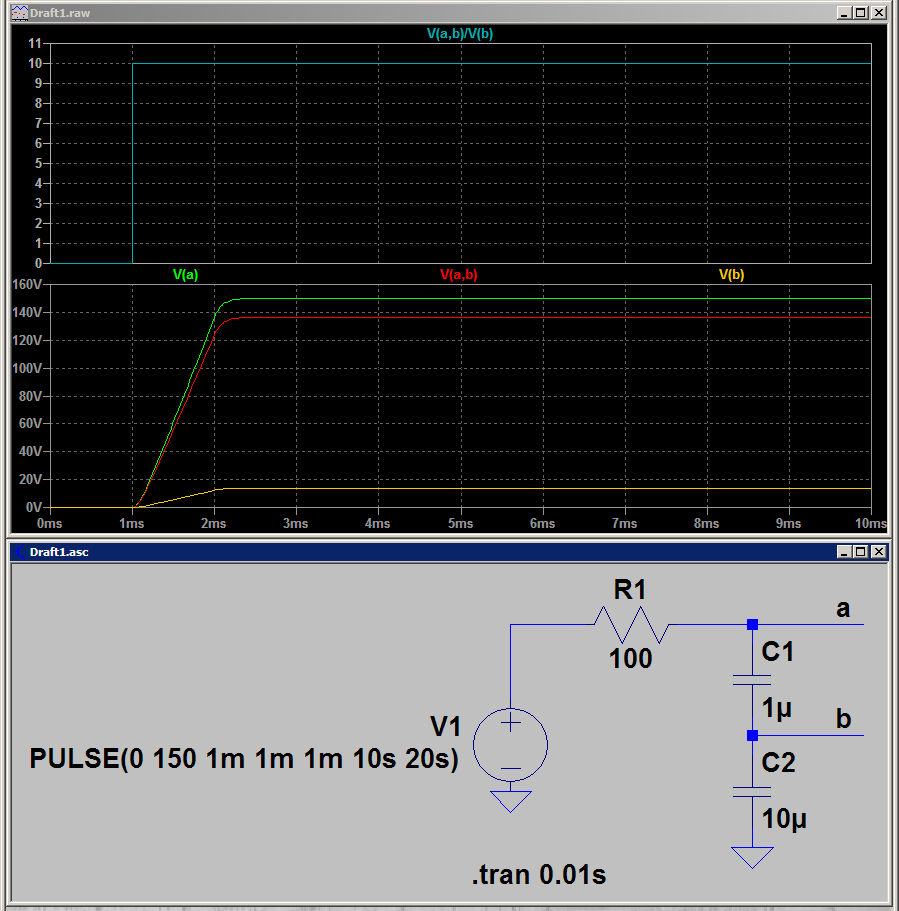I am reading through the book Practical Electronics for Inventors, specifically the section on capacitors. I read that capacitors in series will an have equivalent capacitance C with formula
$$ C=(1/C_1 + 1/C_2 + ... + 1/C_n)^{-1} $$
If we connect some capacitors in series to a voltage source Vs and let the capacitors charge up, the voltage drop across each capacitor will depend on the ratio of the individual capacitor to the equivalent series capacitance. The voltage drop across any of the capacitors is \$V_i = \frac{C}{C_i}V_s\$
The author gives the following example problem:
Using the equations above, the equivalent capacitance is C=0.91 microfarads and V1 = 136 V, V2 = 14 V. However, when I try to simulate this circuit in CircuitLab, I don't get the same result. No matter what I do, CircuitLab says there will be a 75V drop across the first capacitor. How can I replicate the textbook result in CircuitLab?







